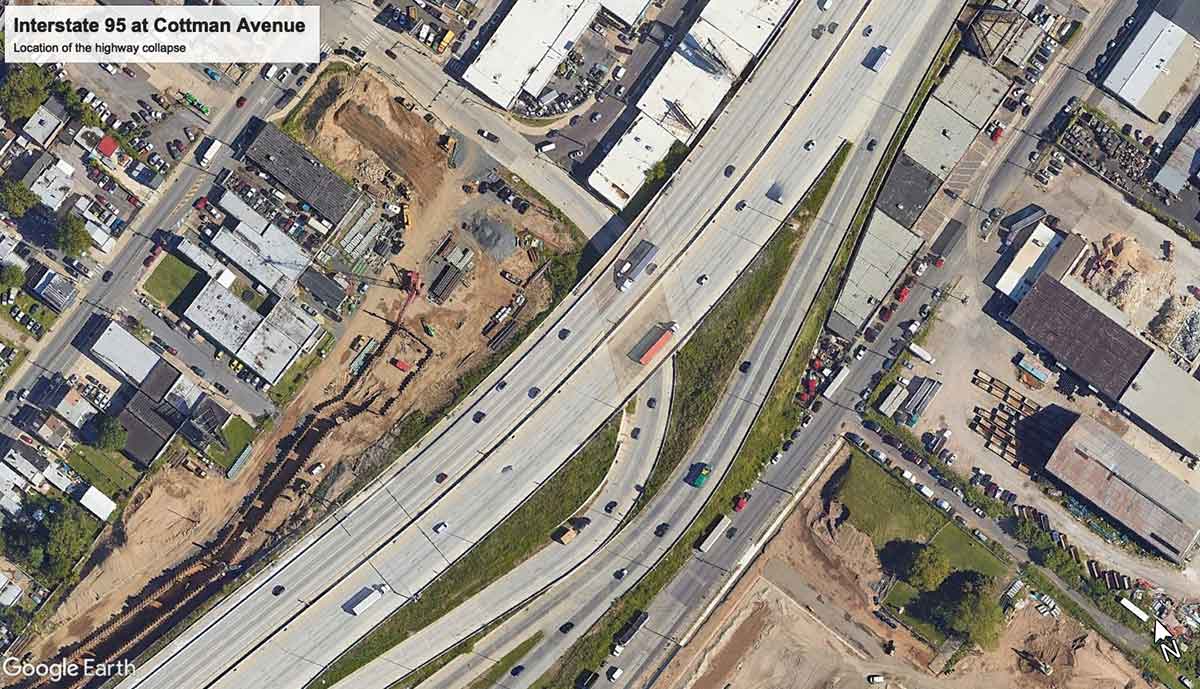
Map data: Google, Maxar Technologies
Two sections of road – a bridge girder and diaphragm – that were affected by
the tractor-trailer fire and subsequently collapse of Interstate 95 will be
housed at Drexel University’s College of Engineering beginning this week,
offering researchers and students alike a unique chance to learn from the
incident.
Arvin Ebrahimkhanlou, PhD
, assistant professor and
Amir Farnam, PhD
, associate professor of civil, architectural and environmental engineering,
collaborated with officials at PennDOT to secure the sections, which come
from a section of the elevated road that was closes to the fire. They say
that the housing of the sections will open doors to a variety of academic
opportunities.
“From a research perspective, by looking at the deformed girder, we will be
able to assess its condition,” Ebrahimkhanlou said. “This will provide
valuable visual clues that can help machine learning-based visual
inspections recognize when a bridge is at risk.”
Farnam added that the section could be used for materials research. “There
is still concrete and rebar attached to the girder,” he said. “We can look
at samples on a microscopic level to determine their material makeup and how
the fire affected them, giving us insight into what compositions can
withstand what temperatures.”
The sections will also act as a powerful teaching tool for undergraduate
students.
“You don’t typically get to see a massive piece of road like this,”
Ebrahimkhanlou said. “Students from across the college will get a chance to
see the damage up close, leading to conversations among structural engineers
about how the bridge was designed; among architectural engineers and
materials scientists about what was used to build it; and among civil
engineers about the impact on traffic, commerce, the local neighborhood, and
so on.”
Drexel engineers have been keeping tabs on the I-95 project since the
morning of the collapse. Experts from the college have been
providing context
to the incident and rebuilding project in local media, and Aero Aggregates
of North America, a company under the direction of alumnus Archibald S.
Filshill, MS civil engineering ’95, PhD civil engineering ’10, provided
recycled glass aggregate
for the backfill project.